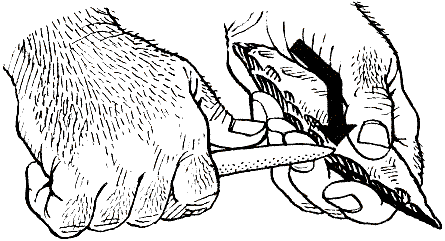As early as 77,000 years ago, humans were already proficient at forging deadly weapons, judging from the recent discovery of an ancient Stone Age weapons cache in a South African cave. Archaeologists discovered 25 sharp and pointy weapons that had clear signs of both weapon manufacturing and handling.

Stone Age arsenal
The weapons were discovered in a cave around Sibudu located only 9 miles (15 kilometers) away from the Indian Ocean coast. Veerle Rots, a research professor at the Fund for Scientific Research at the University of Liège in Belgium, made multiple trips to the site in 2013 and 2014. Ultimately, Rots and colleagues managed to unearth, analyze, and describe two dozen dangerously sharp Middle Stone Age weapons.
The Middle Stone Age or Mesolithic is a period marked by significant technological advancements. By at least 285,000 years ago, humans in Africa had mastered the craftsmanship of various tools with an emphasis on flake rather than large core tools. One of the main innovations was the application of ‘prepared core technique,’ which involves flaking a core on one side from a single blow. This allowed the craftsman to make flakes of predetermined sizes and shapes, raising the level of standardization and predictability in stone technology.
Parts of the Middle Stone Age toolkit we can find the versatile handaxe, but also points, which could be hafted on to shafts to make spears, stone awls, which could have been used to perforate hides, and scrapers that were useful in preparing hide, wood, and other materials.
The find at the Sibudu cave, however, is the earliest evidence of an even more advanced form of Middle Stone Age technique called pressure flaking. Using such a technique, a craftsman can readily and easily refine the sharp edges of a weapon. Pressure flaking also gave toolmakers the ability to create notches where the piece could be bound more securely to the shaft of the weapon or tool, thus making it far more useful.

No one knows when this important technique was invented, but the discovery at the South African cave proves the method is older than 77,000 years.

Closer inspection revealed the weapons had evidence of wear and tear but also organic residues like “glue, animal residues, including blood and bone fragments, [and] plant residues, including fibers,” scientists write in PLOS ONE. The sticky resin was likely used to bound the sharp-tipped stones to a shaft that could be thrown from a distance, thus making a spear or arrow. Some of these weapons used pressure flaking on both sides to create a double-edged stone, said the researchers who experimentally reproduced the weapons using the same ancient technology. At least 14 of the 25 stone weapons had impact-related damage and significant signs of wear and tear. This entails that advanced hunting technology was in place in Africa before 77,000 years ago. Interestingly, hunter-gatherers in Europe only caught on with pressure flaking sometime between 25,000 and 20,000 years ago.



